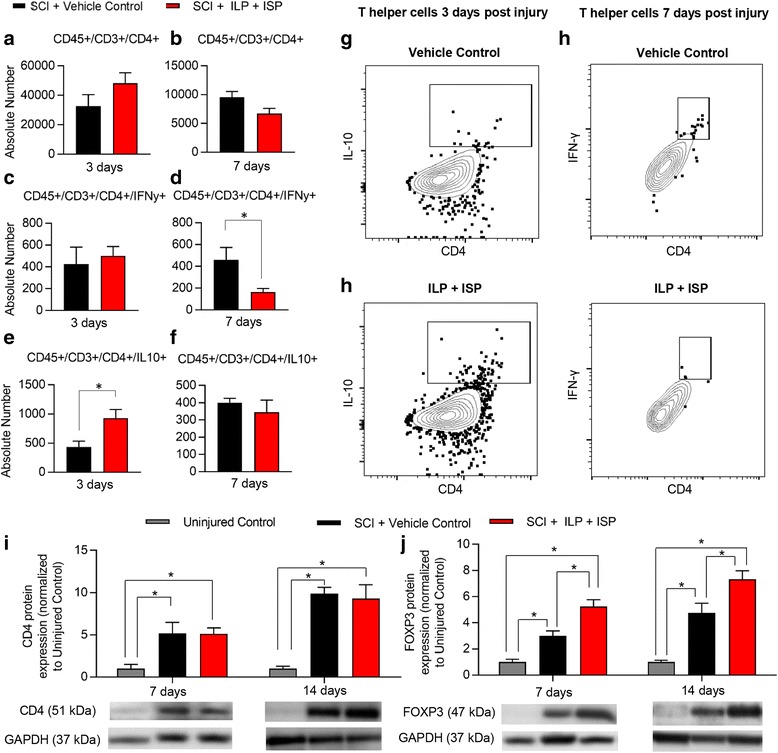Fig. 5.

ILP and ISP promotes a phenotypic switch in helper T cells toward a Treg phenotype. a, b Flow cytometric assessment revealed no apparent difference in the overall infiltration of helper T cells (CD45+/CD3+/CD4+) in the injured spinal cord at 3 and 7 days post-injury between vehicle and ILP/ISP-treated animals. c, d However, ILP/ISP-treated animals exhibited a significant decrease in the number of effector T cells (CD45+/CD3+/CD4+/IFNγ+) at 7 days post-injury. e, f A significant increase in the total number of regulatory T cells (CD45+/CD3+/CD4+/IL10+) was observed at 3 days post-injury in ILP/ISP-treated animals. g, h Representative flow cytometry gates are shown. i Western blot analysis showed upregulation of CD4 protein expression, at 7 and 14 days post-SCI compared to uninjured control group confirming infiltration of helper T cells in the injured spinal cord. Confirming our flow cytometry, ILP and ISP had no apparent effect on the overall protein expression of CD4. j However, ILP and ISP significantly increased FOXP3 protein expression, a marker of regulatory T cells, at both 7 and 14 days post-SCI compared to SCI vehicle control. Western blot results have been normalized to the actin loading control prior to subsequent normalization to the control values. The data show mean ± SEM, *p < 0.05, Student t test (a–f), one-way ANOVA (i, j), N = 4-6/group
